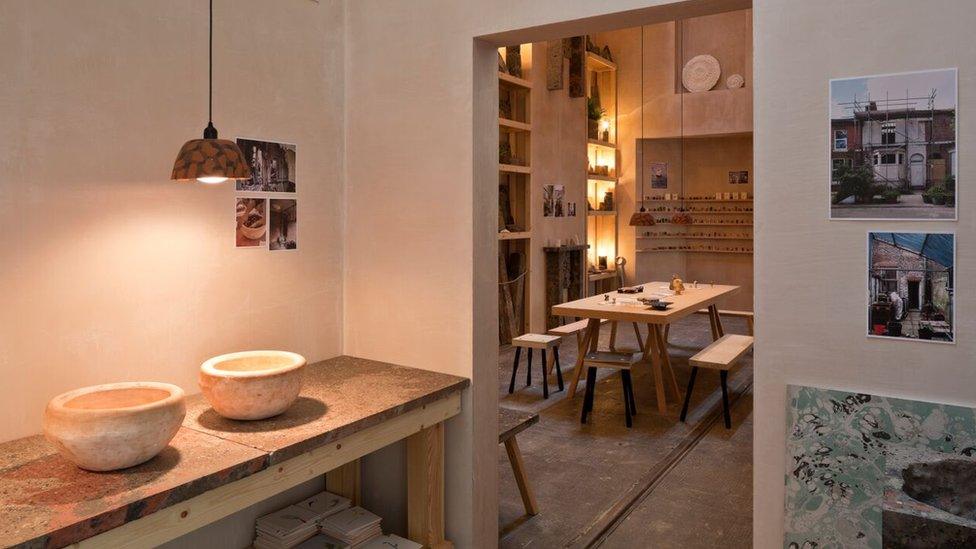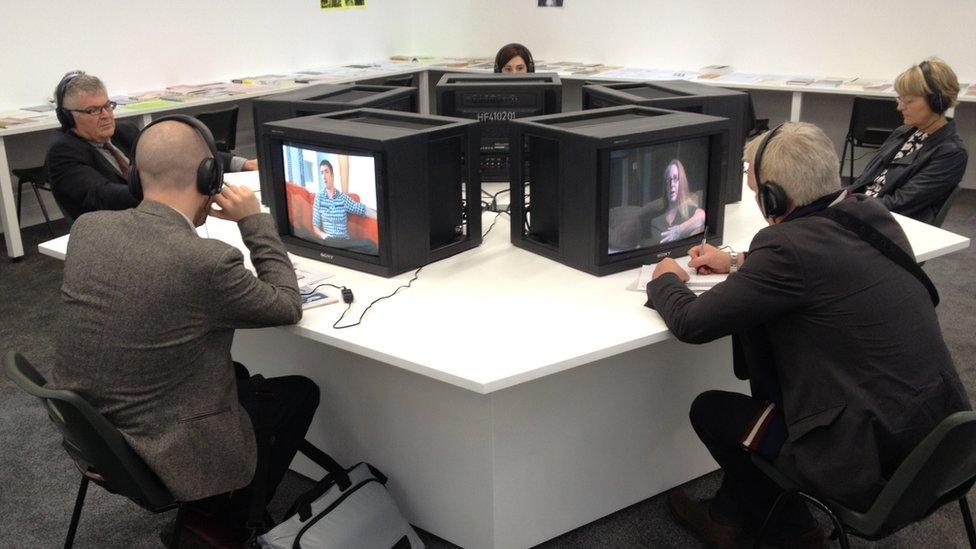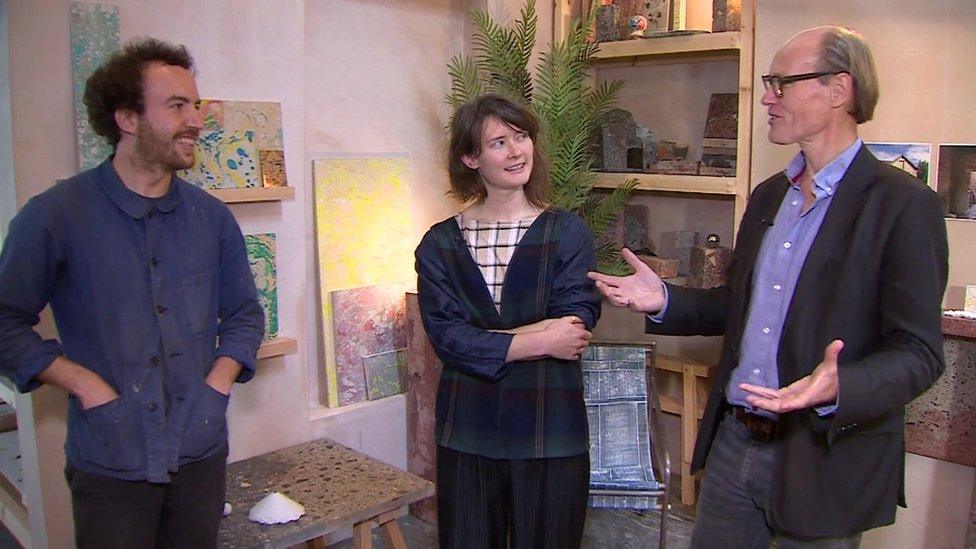The 2015 Turner Prize is the least egotistical I've seen
- Published

The Turner Prize shortlist includes a design collective who have helped breathe new life into a rundown Liverpool housing estate.
I don't know why, but the Turner Prize always feels fresher when it's not in London. If last year's edition at Tate Britain was a low point, the 2015 version at Tramway in Glasgow is a high the prize hasn't reached for a long time.
To be clear, we're a million miles away from the shock-n-gawp of the YBA years, or the inward looking, art-history obsessed efforts of more recent incarnations.
This is the least egotistical, knowing, in-jokey Turner Prize I've seen.
All four exhibits - three by women, the other by a design collective - are intelligent investigations and observations about the shortcomings and overlooked elements of our everyday lives.

Bonnie Camplin's installation (above) is an adaptation of her The Military Industrial Complex (2014).
At first glance, it looks like a school classroom project. But spend some time watching the films being screened on the monitors, and scanning the strange array of books laid out on tables like leaflets - which cover topics from war tactics to witchcraft - and your mind is provoked into wandering off its usual course and into strange side roads and back alleys of thought.

Nicole Wermers also entices you into a semi-fictional environment, where the real world and our perception of it are challenged. A geometric arrangement of tubular stainless-steel chairs, all of which have fur coats casually hung over the backs, adorn the gallery like classical Greek sculptures.
But the coats haven't been loosely draped, they've been stitched to the chairs, thus making them part of their fabric: The artist has in effect pimped her classic Breuer-type chairs to make a surrealist and political statement about display, ownership, gender and perception.

The most formally beautiful work is presented by Janice Kerbel. The Canadian-born, London-based artist has used the human voice as her material to make a choral work called DOUG (above).
It is the latest in a series of installations by the artist in which she examines the space between reality and fiction; the visible and invisible; the idea and its realisation. All of which is fascinating, but I very much doubt anybody will pick up on those philosophical nuances when experiencing the simple pleasure of hearing the haunting beauty of six professional singers performing in such an intimate space.
We are brought back to earth by the fourth of the shortlisted artists, Assemble. The fact that this London-based collective of 20-something architects and designers were invited to take part in the first place marks a bold and welcome change to the old Turner Prize dogma. They're not artists, they don't have a gallery representing their work, and they are self-effacing enough to be both bemused and amused by their selection.

They have taken the opportunity to further the work they have been doing in helping to regenerate the Granby Four Streets in Liverpool. All the "art" they have on display in their installation is for sale and has been made by artisans living in Granby (with a little help from the Assemble team). They are charging high street, and not art world prices, for the lampshades and fireplaces exhibited. All the money they make goes back into the Granby project.
They are not the only artistic-types whose practice is based in social activism and regeneration - the American conceptual artist Theaster Gates is a prime mover in this sphere - but they are going about their business with impressive verve and dedication. They are as different from your typical A-list artist as Jeremy Corbyn's Labour Party is to David Cameron's Conservatives.
So, who will win? Not sure. Either Assemble or Bonnie Camplin, I'd guess. My vote would go to the former.
- Published14 July 2015
